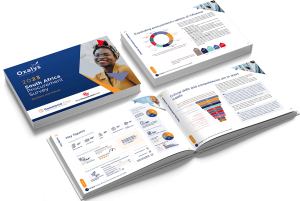By Piotr Raszewski, Senior Analyst: Knowledge Services, Infosys, and
Srikrishna Koneru, AVP, Strategic Business Practice Head: Sourcing and Procurement, Infosys
When one thinks of ways to measure the effectiveness of cross-operation between procurement and finance, more than a few methods come to mind. Purchase order (PO) compliance rate, discount utilisation, the number of active vendor accounts, etc., are some of the indicators.
The business metric of impacting payment on time, however, best reflects the level of synergy between procurement and finance. In this article, we will look at one of the resounding examples of how business intelligence (BI) reports and data analytics can be leveraged to gain a clear perspective on the cause-and-effect relationship between the two departments.
Payment on time is a business metric that allows companies to exercise control over the end-to-end procurement process. The higher the percentage of payouts made on time, the better the supplier relations and discount utilisation; a lower percentage would denote better cash flow. Balancing these two ends in a manner that suits the particular needs of a company best is of key interest here.
How to maintain this balance across multiple locations and levels of engagement, while ensuring high supplier satisfaction? A bird’s eye view of the overall situation and the ability to investigate and analyse setbacks from a single application would be a good start, right?
Before we go into the details, let us get one point out of the way at the outset – the payment on time metric is not a new concept but rather a fundamentally basic one. But understanding the dynamics of such a metric is quite often like diving into murky waters, especially without appropriate methods and technology applications. For every timely payment invoice generated, there are numerous factors in the background at play to make it happen (and many of these are outside of the realm of finance). Infosys BPM worked with one of its clients – a leading air conditioning and refrigeration company – to maintain and structure the process of understanding the metric with the use of data engineering and advanced analytics to mitigate the risk of late payment patterns.
Our collaboration with the client began with a benchmarking exercise that covered ten different invoice-to-payment (I2P) metrics. To collect and combine these metrics properly, we had to ensure that we compared apples with apples and thoroughly understood the processes put in place. How to distinguish invoices posted automatically from manual ones? How to separate travel and other purchase-related expenses? How to track changes on each document? These straightforward questions often do not have straightforward answers, especially when there are a number of other small exceptions that require consideration. After much deliberation, we set out grounds to introduce a near-live reporting solution to track payment on time for 18 different client affiliates.
However, building such a platform was not the end-all, as clients now closely scrutinise solutions for return on investment. The dashboards we created were thus only the equipment. So, we went a step beyond the usual to pinpoint the areas and means of improvement for the client. Analytics is not the automation of reporting; it is the augmentation of business case detection.
We decided to adopt a lean approach. We automated data extractions using VBA scripts to place the data in a specified folder. As for the data, we took five SAP transaction downloads and three mapping files to set a base for calculations and visualisations on our dashboard. Additionally, we designed the transformation of all data within Power BI itself, which is usually done with the support of big-data software. We ended up with 15 different tables within Power BI that allowed us to proceed with the visualisation of the client’s accounts payable (AP) process and dependencies within, without bearing any cost related to additional SQL server space.
The areas of the AP process that we integrated into the dashboard were:
– Basic paid on time/paid late/paid too early overview for all company codes in the scope of the project
– Drilling down into the above with vendor details
– Investigating the root causes of late payment (e.g. late receipt, short payment terms, payment run missed, etc.)
– Missed discount analysis
– Posting inaccuracy overview
As a result, we defined two crisp business cases, found further areas of improvement and deployed the dashboard for AP operations by training and producing a detailed user manual. By changing the settings in SAP that followed our lost discount analysis of previous years, we were able to bring the client to break-even point within three months of implementation.
The second business case was full visibility on payments issued less than 14 days before the due date, which included seven-digit payments issued as early as 60 days before the due date. This helped to trace system errors and to avert unwritten business practices to give a noticeable boost to free cash flow. These analytics can be run daily without over-stretching resources.
Our solution did not claim to boost the client’s PO compliance or increase their payment on time overnight. But we did effect a massive change in organising the analytics process behind it, which is the fuel for all meaningful transformations. The solution gave our client easy access to valuable insights needed to drive change in both procurement and finance. Infosys BPM, one of the leaders in this space, anticipate that BI and advanced analytics will soon shed its novelty in corporate circles to become a permanent fixture in service delivery. Given its over-arching advantages, it is only a matter of time.



























